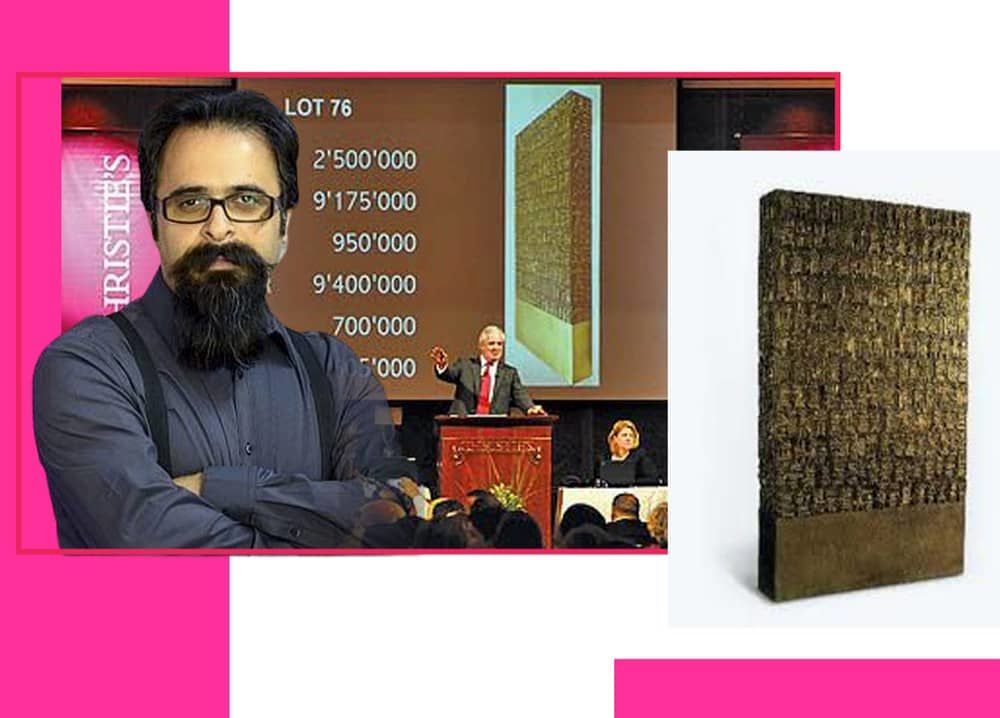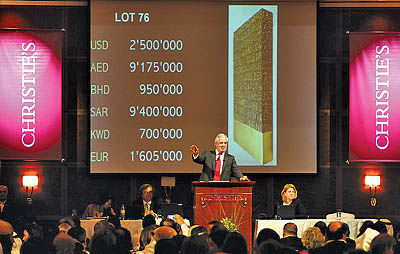Hossein Hashempoor | Record for the Middle East Art Sale
Hossein Hashempoor: Why Is the Record for the Middle East Art Sale Still Standing at 2.8 Million Dollars from 2008?

It may sound incredible, but the record for selling an artwork in the Middle East has remained at 2.8 million dollars since 2008.
IranArt : Hossein Hashempoor: The Middle East's track record for art sales has remained unchanged for the past sixteen years.
1:
In early May 2008, there was speculation in the art world that the Museum of Islamic Art (MIA) may purchase several great items from Christie's Dubai's fourth edition, resulting in many masterworks by local artists on display. Among the items offered for auction was a sculpture titled "Oh, Persepolis (The Wall)" by renowned Iranian artist Parviz Tanavoli, who is now 87 years old and lives in Canada. The piece was commissioned by Pars Aryan Investment Company, which is affiliated with Iran's Pasargad Bank.
Tanavoli's artwork was being transported by ship from Canada to Tehran when it learned of the news. It next made a detour in Dubai to be displayed at the Emirates Towers Hotel, which houses Christie's exhibition and auction venue. On April 30 of that year, the artwork was purchased by MIA for $2,800,000 and transported to Doha, Qatar.

That number was unheard of at the time and was seen to be a remarkable record for Middle Eastern art, generating a lot of excitement and drawing interest from all around the world. Many people expected the record to be broken shortly due to the region's incredible enthusiasm and the presence of affluent collectors, some of whom owned oil wells, but this has never happened.
2:
Still, five years later, on October 30, 2013, at Christie's 15th season in the Middle East, a determined effort was made to surpass the record set by "Oh, Persepolis". Fahr El-Nissa Zeid, a late Turkish-Jordanian abstract painter, came close to breaking the record with her abstract painting "Break of the Atom and Vegetal Life", but settled for $2.7 million, keeping the Tanavoli statue's record intact.
3:
Some people believe that the excitement of the art market has reduced because international auctions are no longer held in the area, and the performance of Middle Eastern auctions has transferred to London, Paris, and other locations.
4:
Large enterprises and wealthy collectors are investing in Middle Eastern art at a rate many times that of 2008, and market turnover is considerably higher than it was sixteen years ago. Oddly, the record of art sales has remained unchanged.
It appears that local art investors are unaware of the importance of records in the art market and have ignored their relevance. They only need to closely examine global teachings on the subject to realize the enormous influence recordings have on the growth of the art sector.
5:
One of the most pressing challenges in this regard is the scarcity of prominent regional auctions. Despite attempts, it is clear that regional art auctions for modern and contemporary art are absent.

6:
America and Europe have long held a larger share of the art market and the sale of artwork, but China and Hong Kong have recently made significant steps to carve off a smaller portion of this cake for themselves. In my perspective, all that is required is the right attitude and a transformative spirit to secure a piece of the global art cake for the Middle East.

